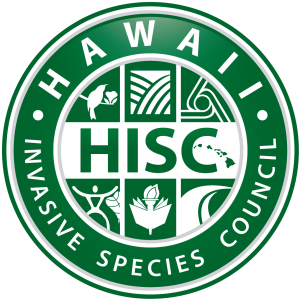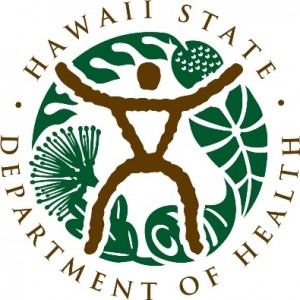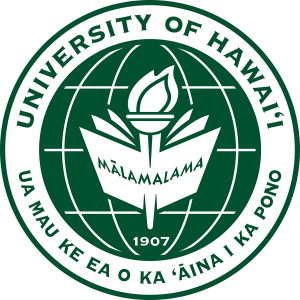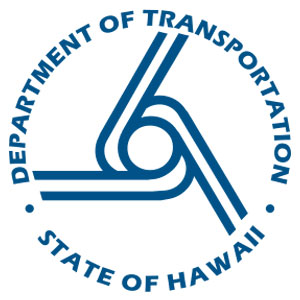Hawaii’s Invasive Species Agencies & Policies
Hawaii has a number of agencies and partners dedicated to working on the complex issue of invasive species. Below are descriptions and links to various agencies, as well as a description of any relevant regulations or policies regarding invasive species that fall under the mandate each agency.
First, a note on the term “invasive species” from a regulatory perspective: this is currently a non-regulatory term used to describe any species that fits the federal definition of “invasive species”: an alien species whose introduction does or is likely to cause economic or environmental harm or harm to human health. The HISC is in the process of developing administrative rules that will create a definition for Hawaii and designate certain invasive species for control purposes. There are a number of other regulatory terms to describe harmful species that are used below, including “pests,” “injurious wildlife,” and “noxious weeds.”
Hawaii Invasive Species Council
 The HISC was established for cabinet-level coordination and policy direction amongst the various agencies that deal with a portion of the invasive species problem. Chapter 194, Hawaii Revised Statutes, describes the duties and authorities assigned to HISC. In addition to policy advocacy and project coordination, HISC manages an interagency grants program to help fill gaps between existing agency programs and extend our current abilities through research and innovation. You can learn more about HISC here .
The HISC was established for cabinet-level coordination and policy direction amongst the various agencies that deal with a portion of the invasive species problem. Chapter 194, Hawaii Revised Statutes, describes the duties and authorities assigned to HISC. In addition to policy advocacy and project coordination, HISC manages an interagency grants program to help fill gaps between existing agency programs and extend our current abilities through research and innovation. You can learn more about HISC here .
Hawaii Department of Agriculture
 The Hawaii Department of Agriculture (HDOA) regulates a number of activities related to pests. Below are a few key examples of HDOA policies that are relevant to pest species. For a full description of HDOA’s mandates, administrative rules, and programs, visit the HDOA website.
The Hawaii Department of Agriculture (HDOA) regulates a number of activities related to pests. Below are a few key examples of HDOA policies that are relevant to pest species. For a full description of HDOA’s mandates, administrative rules, and programs, visit the HDOA website.
- Importation of species into Hawaii
- The Hawaii Department of Agriculture’s Plant Quarantine Branch regulates the importation of goods into the State. Chapter 150A, Hawaii Revised Statutes (HRS), describes HDOA’s plant and non-domestic animal quarantine mandate. Hawaii Administrative Rules (HAR) Chapter 71 describes the process for importation and describing which species are conditionally approved, restricted, or prohibited from importation. For more information on importation, visit HDOA’s import program page.
- Intrastate Quarantine
- The HDOA also regulates the movement of agricultural pests within the State by restricting the movement of certain goods between islands and inspecting interisland shipments. The process by which HDOA regulates these shipments is described in Hawaii Administrative Rules Chapter 72. You can learn more by visiting the Plant Quarantine Branch’s page on their Interisland Inspection Program.
- Noxious Weeds
- The HDOA defines “noxious weeds” in Chapter 152, HRS as “any plant species which is, or which may be likely to become, injurious, harmful, or deleterious to the agricultural, horticultural, aquacultural, or livestock industry of the State and to forest and recreational areas and conservation districts of the State, as determined and designated by the department from time to time.” The criteria for designating noxious weeds and the list of species currently designated as such are available in Hawaii Administrative Rules Chapter 68.
- Pests for Control
- The HDOA Plant Pest Control Branch eradicates, contains, or controls pests of plants which could cause significant economic damage to agriculture, our environment, and quality of life. This branch of the HDOA includes the Biological Control Section, which researches and develops biological control agents to mitigate the impacts of certain pests.
Hawaii Department of Land and Natural Resources
 The Department of Land and Natural Resources (DLNR) regulates the transport of and release of wildlife, manages aquatic and terrestrial resources, and is the administrative home of the Hawaii Invasive Species Council. To see a full description of the department’s mandates, administrative rules, and programs, visit the DLNR website.
The Department of Land and Natural Resources (DLNR) regulates the transport of and release of wildlife, manages aquatic and terrestrial resources, and is the administrative home of the Hawaii Invasive Species Council. To see a full description of the department’s mandates, administrative rules, and programs, visit the DLNR website.
- Injurious Wildlife
- Under statutory authorities provided by Chapter 183D, Hawaii Revised Statutes, DLNR’s Division of Forestry and Wildlife (DOFAW) maintains Hawaii Administrative Rules Chapter 124, which defines “injurious wildlife” as “any species or subspecies of animal except game birds and game mammals which is known to be harmful to agriculture, aquaculture, indigenous wildlife or plants, or constitute a nuisance or health hazard and is listed in the exhibit entitled “Exhibit 5, Chapter 13-124, List of Species of Injurious Wildlife in Hawaii…” Unless permitted by DLNR, it is prohibited to release, transport, or export injurious wildlife. Permits may be applied for per the instructions at DOFAW’s Injurious Wildlife page.
- Alien Aquatic Organisms
- Under statutory authority provided Chapter 187A-31, Hawaii Revised Statutes, DLNR’s Division of Aquatic Resources (DAR) is designated as the lead State agency for preventing the introduction and carrying out the destruction of alien aquatic organisms through the regulation of ballast water discharges and hull fouling organisms.
Hawaii Department of Health
 The Department of Health regulates programs that impact human and environmental health. Though the Department’s Vector Control Branch was eliminated in 2009, the Department is still mandated to control vectors of human disease. Remaining Vector Control Workers are currently employed under the Department’s Sanitation Branch. You can learn more at the DOH webpage for Vector & Disease Control.
The Department of Health regulates programs that impact human and environmental health. Though the Department’s Vector Control Branch was eliminated in 2009, the Department is still mandated to control vectors of human disease. Remaining Vector Control Workers are currently employed under the Department’s Sanitation Branch. You can learn more at the DOH webpage for Vector & Disease Control.
- Vector Control
- Chapter 321-11, Hawaii Revised Statutes describes subjects of health under the Department’s purview, including the management of mosquito breeding habitat and the deinsectization of aircraft to prevent the introduction, transmission, or spread of disease or the introduction or spread of any insect or other vector of significance to health. The Department’s programs relating to vector control are further described in Hawaii Administrative Rules Chapter 26.
University of Hawaii
 The University of Hawaii is our primary research for academic research and cooperative extension programs that benefit the public and advance our knowledge regarding invasive species. UH’s relevant colleges and programs include:
The University of Hawaii is our primary research for academic research and cooperative extension programs that benefit the public and advance our knowledge regarding invasive species. UH’s relevant colleges and programs include:
- College of Tropical Agriculture and Human Resources (CTAHR), which includes faculty and specialists focusing on invasive species in the following departments:
- The Plant and Environmental Protection Sciences department, focusing on invasive insect biology, biological control, and plant pathogens.
- Natural Resources and Environmental Management, focusing on wildlife management and invasive weed management.
- The Cooperative Extension Service, including researchers specializing in pests, diseases, and weeds.
- College of Natural Sciences, which includes invasive species specialists and faculty in the following departments:
- The Department of Botany, including researchers in invasion biology and species conservation.
- The Pacific Cooperative Studies Unit (PCSU). PCSU employs approximately 300 positions working on conservation research, including the Coordinating Group on Alien Pest Species (CGAPS), the Watershed Partnerships, and the Hawaii Ant Lab. These positions are not part of the University’s budget request to the legislature and rely on grants from entities like the HISC for support. PCSU is also the home of the Invasive Species Committees (ISCs) working on each island, including:
Hawaii Department of Transportation
 The Hawaii Department of Transportation (HDOT) manages the state’s harbors, airports, and highways. HDOT’s proactive engagement in minimizing the movement of invasive species through these potential pathways is a critical part of Hawaii’s invasive species management. HDOT’s relevant divisions include:
The Hawaii Department of Transportation (HDOT) manages the state’s harbors, airports, and highways. HDOT’s proactive engagement in minimizing the movement of invasive species through these potential pathways is a critical part of Hawaii’s invasive species management. HDOT’s relevant divisions include:
- Highways Division, which has developed the Statewide Noxious Invasive Pest Program (SNIPP) to minimize invasive species concerns related to the maintenance and use of state highways. The SNIPP Strategic Plan describes the department’s goals for the period of 2012-2022.
- Airports Division: In addition to working with Hawaii Department of Agriculture on hosting facilities for agricultural pest inspection, the Airports Division is pursuing an interagency project under the HISC to enhance pest monitoring at airport facilities. The goal for this future project, known as Māmalu Poepoe, is to coordinate efforts of UH researchers, Department of Health Vector Control workers and entomologists, Department of Agriculture entomologists, and Department of Land and Natural Resources biologists to develop a pilot program that examines pest presence and creates a model for enhanced pest surveillance.
Department of Business, Economic Development, and Tourism
 The Department of Business, Economic Development, and Tourism (DBEDT) is the administrative home of two programs impacted by invasive species:
The Department of Business, Economic Development, and Tourism (DBEDT) is the administrative home of two programs impacted by invasive species:
- Office of Planning, which administers the Coastal Zone Management Program (CZM), Ocean Resources Management Plan (ORMP): CZM is tasked with coordination of the ORMP: an interagency effort to effectively manage and protect marine resources. Office of Planning also hosts the State’s GIS program, an important resource for mapping and planning invasive species projects.
- Hawaii Tourism Authority (HTA): DBEDT is the administrative host of the HTA. A report to the HTA from the University of Hawaii Center for Sustainable Coastal Tourism estimates that the 2010 market valuation for Hawaii’s natural resources, tourism infrastructure and facilities, and tourism related businesses was approximately $8.24B. The report identifies invasive species as a primary threat to natural resources that support Hawaii’s tourism industry (Cristini et al., 2012).